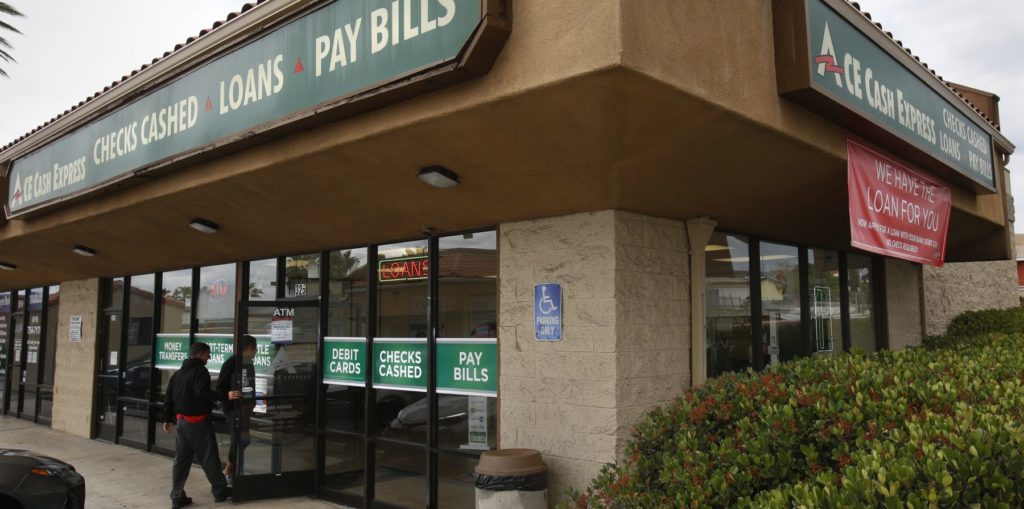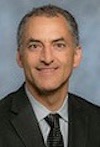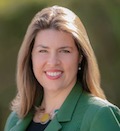Daily Business Report-May 17, 2019
CALmatters photo
As more Californians borrow at shockingly
high interest rates, will state crack down
on ‘predator lending’?
By Ben Christopher | CALmatters
Elishia Benson of Chula Vista already knew the havoc a high interest rate loan could wreak on a bank account. She had borrowed before, including from payday lenders, which legally can offer a maximum of only $255. But four years ago, she felt out of options.
A self-described “autism” mom in Chula Vista, she didn’t have a job. What she did have: lots of debt, plus rent, car payments and utility bills.
So she went online and found Wilshire Consumer Credit—a company willing to give her $2,510. The terms of the “pink slip” loan: She would pay $244 every month for the next three years, or surrender her 2003 Ford Explorer. “I have a daughter, a young child. I just wanted to make sure we were good,” she said, acknowledging “I wasn’t really focused on the interest.”
The annual rate on her loan: 112 perent.
Unlike in 38 other states, charging a triple-digit interest rate on many consumer loans is legal in California. In the state’s rapidly growing market for “subprime” consumer credit, terms like Benson’s are increasingly common.
According to data the industry reported to state regulators, between 2009 and 2017, “small dollar,” high-cost credit—loans of less than $10,000 with rates of over 100 percent—have swelled from 4 percent of the non-bank consumer lending market to nearly one-third.
Benson recalled making her payments for nearly a year and a half, cutting other expenses and repaying over $4,000 before deciding she “couldn’t do it anymore.” She went to the Legal Aid Society of San Diego, which said it identified a mistake on the loan agreement: Wilshire Consumer Credit had allegedly failed to disclose a $15 fee.
A lawyer for Westlake Financial Services, which controls Wilshire Consumer Credit, declined to confirm Benson’s account, saying settlement terms are confidential.
Benson said she got out from under her loan on a technicality, but most borrowers cannot.
High-cost lenders argue that their rates reflect the risk of lending to the state’s poorest borrowers—consumers often rejected by traditional banks.
“We are not pricing these products because we feel like it,” said Mary Jackson, CEO of the Online Lenders Alliance, a trade group. “We have to balance out the risk.”
But consumer advocates say that these lenders, which sometimes set rates exceeding 200 percent, profit off of borrowers’ desperation or lack of financial sophistication, and often make a bad situation worse. Now they’re backing a bill by Assemblywoman Monique Limón, a Santa Barbara Democrat, that would bring consumer loans between $2,500 and $10,000 under a new cap of roughly 38 percent. With annual fees, the maximum cost could be as high as 45 percent.
Opponents say the cap would push lenders out of the market, forcing borrowers to turn to illegal lenders—or to go without credit entirely.
But some consumer groups say there are worse things than being unable to borrow.
“Access to credit is only a good thing when it’s affordable, sustainable credit,” said Lauren Saunders from the National Consumer Law Center. “Not credit that is going to ruin your life.”
Since the Great Recession, the business of extending pricey credit to the state’s poorest borrowers has been booming.
In 2009, lenders regulated by the California Financing Law, which include all non-bank creditors except payday lenders, handed out $26 million in small loans with triple-digit interest rates. In less than a decade, that total skyrocketed to over $1 billion—a 40-fold increase.
Many of these high-cost lenders demand cars as collateral. Others specialize in unsecured installment loans, handing out cash, no asset required, and making up the difference with higher rates and aggressive collections practices. Virtually all recent growth in this market has been in the $2,500 to $5,000 range. That isn’t an accident, but a response to California’s patchwork regulatory system, which puts tight price caps on certain loans while leaving rates on others unregulated.
Under state law, ultra short-term payday loans can carry annualized interest costs of 450 percent , but they cannot exceed $255. Larger loans are subject to a cap of around 30 percent—but only up to $2,500.
For increments above that, there’s no legal limit.
“There’s sort of an artificial boundary in California where a lot of the lenders have an incentive to operate right around that $2,500 mark,” said Nick Bourke, a consumer finance researcher at Pew Charitable Trusts. It also gives lenders a reason to convince those who “might be more interested in taking a $1,000 loan” to borrow more.
People don’t realize how disastrous it’s going to be. Most people are not that great at math.
Lauren Muntasir, a single grandmother from the East Bay city of Richmond, said she only needed an extra $1,000 when her car’s transmission died last spring. When she turned to LoanMe, one of the largest high-cost consumer lenders in the state, she said they told her the minimum was just over $2,500.
State data shows that 99.7 percent of LoanMe’s loans between $2,500 and $9,999 carried triple-digit annual percentage rates in 2017.
Muntasir took it anyway: “You can’t look at no hungry baby.”
While lenders attribute the rise of these loans to innovation, critics say it resulted from regulators under the Obama administration turning against payday lenders.
“The increased scrutiny and limitations placed by federal agencies has encouraged the industry to look more toward installment lending,” said Quyen Truong, former assistant director of the Consumer Financial Protection Bureau. The Trump administration is now attempting to reverse some of those limitations even as progressives in Congress push for tighter rules.
Maeve Elise Brown, executive director of Housing and Economic Rights Advocates, a legal aid provider in Oakland, has seen a four-year increase in the number of clients staggering under larger-than-needed loans carrying triple-digit interest rates.
“People don’t realize how disastrous it’s going to be,” she said. “Most people are not that great at math.”

“There’s a misunderstanding of who the average borrower is,” said Roger Salazar, spokesman for Californians for Credit Access, a coalition of small loan lenders. “They’re working folks who are smart and understand what the product is.”
At an Assembly committee hearing last month, some borrowers spoke against Limón’s bill, arguing that high cost loans, though expensive, helped them weather difficult financial times.
But other borrowers report being stunned by the steep cost of their loans. Muntasir from Richmond said that she cried when she realized the total amount she would be expected to pay (she eventually defaulted). Even for those who understand the terms, the math of compound interest can be deceiving.
Angela Garcia, a 35-year-old single mother from South Gate in southeast Los Angeles, recalls the feeling of throwing hundreds of dollars, month after month, at a problem that never quite seemed to get smaller. She called it a “nightmare.”
Garcia, who now works as a medical assistant at Kaiser Permanente, said she was unemployed when she took out her car title loan. She had six kids. Gas prices were high. Christmas was coming. Credit seemed like the only option—and it was ubiquitous.
“Everywhere you drive you see these freaking signs: ‘Get a loan,’ ‘Get a loan,’ ‘Get a loan,” she said. “It sounds great. It sounds like, ‘well, shoot, if they’re willing to help me, why not?’ But no. It’s not. They’re not helping you at all.”
So in 2014, she borrowed $3,200 from LoanMart. She remembers sitting in her kitchen one morning when she heard the sound of jangling chains on the street. She said she raced outside to grab her toddler’s car seat before her Chevy Suburban was towed away.
Garcia said she remembers spending hundreds each month, but doesn’t recall the loan’s exact percentage rate.
That’s not uncommon, said Rosie Papazian, who manages the personal finance program at New Economics for Women, a Los Angeles non-profit. Many clients are reluctant to dig into the details of their own financial situation, either out of shame or a lack of understanding.
“They think, ‘gosh, it’s been three years and I’m still paying off this loan and I don’t really know why.’”
A third of high-cost loans end in default, according to a legislative analysis.
Consumer advocates say there would be fewer defaults—which can trash a borrower’s credit score even as collections agencies continue to seek repayment—if only lenders offered lower rates. Lenders counter that so many of their borrowers fail to pay back the loans because they are, by definition, in dire financial straits.
“Nobody wants to run a lending operation that has a high number of defaults,” said Salazar. But, “it’s a risky customer base.”
Even if roughly 40 percent of customers are defaulting—the case with CashCall, according to court documents from an ongoing class action lawsuit—the remaining 60 percent are using the product “effectively,” said Jackson of the Online Lenders Association.
She added that the proposed rate cap would make it impossible for her members to lend to the most financially desperate customers.
“People find ways to work around some prohibition. Look at what happened when we banned alcohol,” she said.
One 2016 study found that states where payday loan restrictions went into effect saw a 60 percent increase in pawnshop loans, which are typically more expensive. Another study found more bounced checks, more complaints of abusive lending, more bankruptcy.
Tatiana Homonoff, a New York University professor and an author of the 2016 study, said the response to a bill like Limón’s could be different, since payday loans are smaller and have a wider array of substitutes. But it’s important to think through the consequences, she said: “When these loans aren’t available, what do people do instead?”
Here’s how Sen. Ben Hueso, a moderate Democrat from San Diego County who opposes a rate cap, framed the dilemma:
“What do I prefer?” he said. “That we have people that are defaulting on loans? Or people that are getting their knees broken?”
Not everyone agrees that lenders need to charge triple-digit interest rates to serve low-income borrowers. That includes some lenders.
If Limón’s bill were to become law “collectively we will be able to serve those consumers,” said Ezra Garrett, a vice president at Oportun, one more than a dozen lenders in California who offer consumer loans between $300 and $2,500, subjecting themselves to the state’s tight interest caps.
High-cost lenders argue the Oportuns of the state would not be able to profitably serve the state’s riskiest borrowers.
Last year, two rate-cap bills failed—stymied by a coalition of Republicans and business-friendly Democrats. But the political climate has shifted.
Last August, the state Supreme Court raised new questions about the legality of high-cost loans—without specifying what interest threshold would be too much. There’s also some anxiety over a potential ballot fight, which Garrett called the “sledgehammer approach.” The prospect of unending litigation or voter-imposed mandates has pushed more lenders, including OneMain Financial and Lendmark Financial Services, to back Limón’s bill.
In the first quarter of this year, lenders opposed to the bill have outspent those in favor on lobbying by more than 3-to-1. But for now, the political odds may have tilted in the bill’s favor.
Assembly Speaker Anthony Rendon has called such loans “salt water in the desert—a thirsty person will drink it, but they will not be better off.”
With so much support in the Assembly, lobbyists on both sides are preparing for the real fight in the Senate, where moderate Democrats skeptical of the proposal are well represented in the Banking and Finance committee. Tom Dresslar, a retired deputy commissioner at the Department of Business Oversight, called that committee “the industry’s last best hope to preserve this system of exploitation.
__________________
Scripps Research ranked 2nd in world,
first in U.S., for biomedical research
Among stand-alone scientific institutes
Nature Index has ranked Scripps Research second in the world and first in the United States among stand-alone scientific institutes for biomedical research, based on discoveries by the institute’s researchers published in leading scientific journals.
The ranking, released Thursday, “highlights scientists and institutions prominent in the ongoing research effort that will further transform our ideals of a healthy human life in the coming decades,” according to Nature.
Scripps Research ranked 29th globally among all scientific organizations, including universities.
The Nature Index is compiled by Nature Research, part of Springer Nature. The Nature Index 2019 Biomedical Sciences supplement is the latest in a series of focused rankings in areas such as collaboration, innovation and biomedical research. The new biomedical research rankings are based on papers in 27 fields of biomedical research published in 55 journals from 2012 to 2018. The tables rank institutes based on fractional count, which considers the share of authorship on each article.
__________________
Personnel Announcements
Dennis Kingery joins San Diego County Credit Union

Dennis Kingery has been named executive vice president, operations, and chief sales and service officer, for San Diego County Credit Union.
Kingery is responsible for leading the organization’s payment systems, including items processing, cards, and ACH. Additionally, he is responsible for member services (CDs and IRAs) and sales and service of SDCCU’s 43 branch locations in Orange, Riverside and San Diego counties and the credit union’s two call centers, in California and Arizona. He provides leadership, direction and resources to improve sales and service and oversees performance, operational efficiency, fraud monitoring and mitigation, the achievement of sales goals and the alignment to the overall organizational strategy and SDCCU’s focus in delivering exceptional customer service.
With over 15 years of experience leading accounting operations for organizations, Kingery joined SDCCU in July 2014 as senior vice president of accounting operations, where he was responsible for the efficient and effective operation of all aspects of the Accounting Operations Department.
Before SDCCU, Kingery served as senior director of finance, director of accounting and accounting manager at Westerra Credit Union in Denver, Colo., where he spent almost seven years. Prior to that, he served as director of credit union operations at Brethren Benefit Trust in Elgin, Ill. Kingery also spent time in Nigeria serving as a volunteer teacher.
“Dennis joined SDCCU four years ago with extensive leadership experience in accounting and operations for many organizations, including financial institutions. During that time, Dennis has proven to be an asset to our organization in driving operational effectiveness and efficiencies within our accounting operations. He’s a highly effective and strategic leader and will strengthen our executive leadership team,” said SDCCU President and CEO Teresa Campbell.
__________________
Erica Ollmann Saphire joins
La Jolla Institute for Immunology

La Jolla Institute for Immunology (LJI) is honored to announce that Dr. Erica Ollmann Saphire, one of the world’s leading experts in pandemic and emerging viruses, will join the LJI faculty later this spring. Dr. Saphire directs an international consortium analyzing antibody therapeutics and vaccine responses and is currently a professor at Scripps Research in La Jolla.
“We are thrilled to welcome Erica to La Jolla Institute. She is a truly exceptional scientist, who uses molecular insights to bring together scientists and policymakers for scientific advancement and social change,” said Mitchell Kronenberg, Ph.D., LJI President and Chief Scientific Officer. “Having her here will accelerate the Institute’s efforts to solve humanity’s most pressing health challenges, and continue to elevate the remarkable science on the Torrey Pines Mesa.”
Dr. Saphire studies the three-dimensional structures of viral proteins to understand, at the molecular level, how viruses like Ebola, Marburg and Lassa are so deadly. In a series of groundbreaking discoveries, her team has determined the molecular structures of the Ebola, Sudan, Bundibugyo, Marburg, LCMV and Lassa virus surface glycoproteins; how these viruses suppress immune function and where human antibodies dock to defeat these viruses.
A widely recognized structural biologist, Dr. Saphire will establish a molecular imaging facility at La Jolla Institute for cryo-electron microscopy (cryo-EM). The extremely detailed images produced by cryo-EM reveal precisely how essential mechanisms of the immune system operate. Bringing Dr. Saphire’s expertise and state-of-the-art cryo-EM capabilities to the Institute will help LJI scientists drive pioneering advances from molecular structure to human immunology to global health.


